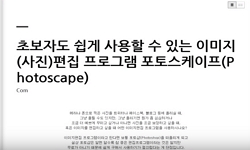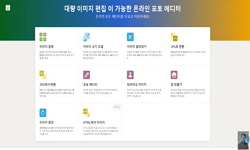목포가 대중매체를 통해 영향력 있는 모습으로 그려진 것은 개항기 대중가요 《목포의 눈물》(1935)과 《목포는 항구다》(1942), 그리고 해방 이후의 1970년대 하이틴영화와 영화 <목포는 항...
http://chineseinput.net/에서 pinyin(병음)방식으로 중국어를 변환할 수 있습니다.
변환된 중국어를 복사하여 사용하시면 됩니다.
- 中文 을 입력하시려면 zhongwen을 입력하시고 space를누르시면됩니다.
- 北京 을 입력하시려면 beijing을 입력하시고 space를 누르시면 됩니다.

개항 이후 서남바닷길의 성쇠와 대중매체 속 목포의 이미지 = The Rise and Fall of Seonam Sea Route and the Image of Mokpo in Mass Media after the Opening of Port
한글로보기https://www.riss.kr/link?id=A101992997
- 저자
- 발행기관
- 학술지명
- 권호사항
-
발행연도
2016
-
작성언어
Korean
-
주제어
목포 ; 서남바닷길 ; 대중매체 ; 이미지 ; 개항장 ; ‘목포의 눈물’ ; ‘목포는 항구다’ ; Mokpo ; Seonam Sea Route ; mass media ; image ; open port ; ‘Tears of Mokpo’ ; ‘Mokpo is a port’
-
등재정보
KCI등재
-
자료형태
학술저널
-
수록면
293-317(25쪽)
- DOI식별코드
- 제공처
-
0
상세조회 -
0
다운로드
부가정보
국문 초록 (Abstract)
목포가 대중매체를 통해 영향력 있는 모습으로 그려진 것은 개항기 대중가요 《목포의 눈물》(1935)과 《목포는 항구다》(1942), 그리고 해방 이후의 1970년대 하이틴영화와 영화 <목포는 항구다>(2004)에서다. 이것은 각각 목포의 번영기와 쇠퇴기로, 서남바닷길의 성쇠와 관련이 깊다. 대중가요 《목포의 눈물》과 《목포는 항구다》는 열린 서남바닷길로 인해 목포가 가장 번성했던 시기에 목포를 대표하고 나라 잃은 우리 민족의 설움과 정서를 대변했다. 한편으로 당시 목포는 수탈항이었기 때문에 그것의 번성 뒤에는 우리 민족의 아픔이 자리하고 있었으며, 그러기에 서럽고 애절할 수밖에 없었다. 해방 이후 일본 · 중국과의 단절, 내륙 · 다도해와의 교류 축소, 정치경제적 소외 등으로 인해 목포는 침체기로 접어들었고, 1970년대 하이틴영화와 2004년 <목포는 항구다>를 통해 다시 모습을 드러냈지만 현대화 발전 속에서 변화하지 못하고 정체된 도시, 희화화된 건달들이 어슬렁거리고 폭력과 욕설과 사기가 난무하는 항구의 이미지로 형상화되었다. 이것은 다시 개그코너 “목포는 항구다”와 대중가요 《사생결단》등을 통해 부단히 확대, 재생산되고 있어 문제가 심각하다. 특정지역이 대중매체를 통해 알려지고 위상을 높이는 것은 결코 간단한 문제가 아니다. 자칫 왜곡된 이미지로 대중매체에 노출되면 오히려 부정적인 결과를 가져올 수밖에 없으므로 그것을 제대로 활용할 수 있는 방법을 적극 모색해야 할 것이다.
다국어 초록 (Multilingual Abstract)
Mokpo portraying as an influential port in mass media was in the pop song “Tears of Mokpo”(1935) and “Mokpo is a port”(1942) at the opening time of port and in high-teen movies(1970s) and the film 〈Mokpo is a port〉(2004) after liberation. ...
Mokpo portraying as an influential port in mass media was in the pop song “Tears of Mokpo”(1935) and “Mokpo is a port”(1942) at the opening time of port and in high-teen movies(1970s) and the film 〈Mokpo is a port〉(2004) after liberation. This is the period of prosperity and decline of Mokpo respectively, and is deeply related with the rise and fall of Seonam sea route. The pop song “Tears of Mokpo” and “Mokpo is a port” represents Mokpo during the period when Mokpo prospered the most due to the opened Seonam sea route, and spoke for the sadness and the emotions of our people who lost our country. Meanwhile, since Mokpo was an exploited port, there were the sufferings and pain of our people behind its prosperity, and it was very sad and mournful. Due to the severance of relations with Japan and China, reduced trade with the inland and Dadohae, as well as political and economic alienation, Mokpo entered a period of recession. It revealed itself again through high-teen movies in the 1970s and the film “Mokpo is a port” in 2004, but it could not change during the time of modernization and development and formed its image as a port of stagnant city, where caricatured gangs roamed around and violence, cruse and fraud was rampant. This is a severe problem because such images are constantly escalated and reproduced through comedy corners ‘Mokpo is a port’ and the pop song 《Fight Desperately》, etc. It is not a simple issue for a certain region to be known through mass media and raise its status. Frequent exposure to mass media in a distorted image rather causes negative results, and thus it is necessary to find ways on how to use the image properly.
목차 (Table of Contents)
- 초록
- 1. 대중매체와 이미지
- 2. 서남바닷길의 번영과 대중가요 속 목포의 이미지
- 3. 서남바닷길의 쇠퇴와 영화 속 목포의 이미지
- 4. 나가며
- 초록
- 1. 대중매체와 이미지
- 2. 서남바닷길의 번영과 대중가요 속 목포의 이미지
- 3. 서남바닷길의 쇠퇴와 영화 속 목포의 이미지
- 4. 나가며
- 참고문헌
동일학술지(권/호) 다른 논문
-
- 역사문화학회
- 김성우(Kim, Sung-Woo)
- 2016
- KCI등재
-
15~19세기 표류 제주인의 출신지 휘칭(諱稱) 양상에 대한 고찰
- 역사문화학회
- 김나영(Kim, Na-Young)
- 2016
- KCI등재
-
- 역사문화학회
- 전성현(Jeon, Sung-Hyun)
- 2016
- KCI등재
-
농민일기에서 나타나는 기술수용과 그 양가성에 대한 연구
- 역사문화학회
- 손현주(Son, Hyeon-Ju)
- 2016
- KCI등재




 KCI
KCI DBpia
DBpia






